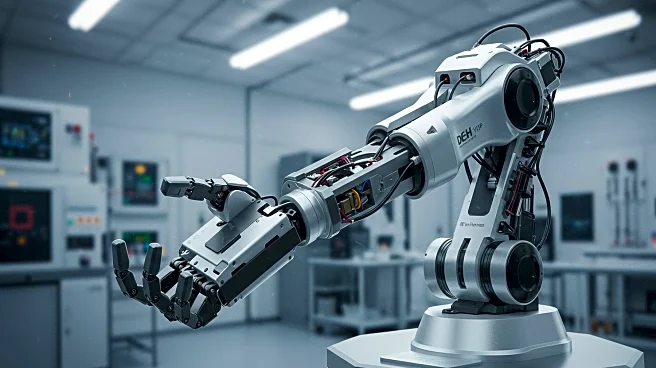What is the story about?
What's Happening?
A new electromagnetic drop weight release mechanism has been developed for human occupied vehicles, utilizing a combination of electromagnet and permanent magnet systems. This mechanism requires power only at the time of dropping, significantly reducing energy consumption. The design criteria include a coil length of 106 mm, a current of 20 A, and a NOT of 18, which are optimized to drop a 25 kg weight. The system has been tested under hyperbaric conditions to ensure functionality at sea depths, demonstrating its capability to operate effectively at 50 bar pressure. The mechanism aims to improve operational efficiency by eliminating continuous power supply requirements, making it suitable for subsea applications.
Why It's Important?
The development of this electromagnetic drop weight mechanism is significant for the maritime and subsea industries, as it offers a more energy-efficient solution for deploying weights in underwater environments. By reducing the need for continuous power supply, the system conserves battery life, which is crucial for human occupied vehicles operating at significant depths. This innovation could lead to cost savings and increased operational efficiency, benefiting industries that rely on subsea exploration and operations. Additionally, the use of non-magnetic materials prevents interference with the permanent magnet, ensuring reliable performance.
What's Next?
Further testing and optimization of the electromagnetic drop weight mechanism are expected to continue, focusing on enhancing its efficiency and reliability in various underwater conditions. The integration of this technology into human occupied vehicles could lead to broader adoption in the maritime industry, potentially influencing design standards for subsea equipment. Stakeholders may explore additional applications for this mechanism, considering its energy-saving benefits and operational advantages.
Beyond the Headlines
The development of this mechanism highlights the importance of energy efficiency in subsea operations, addressing both environmental and economic concerns. As industries seek sustainable solutions, innovations like this could drive a shift towards more eco-friendly practices in maritime technology. The successful implementation of such systems may also encourage further research into magnetic technologies and their applications in other fields.
AI Generated Content
Do you find this article useful?











